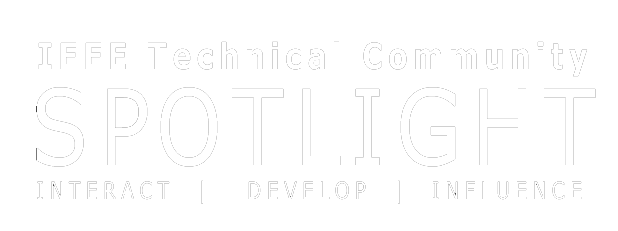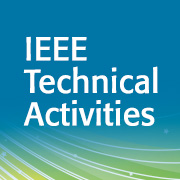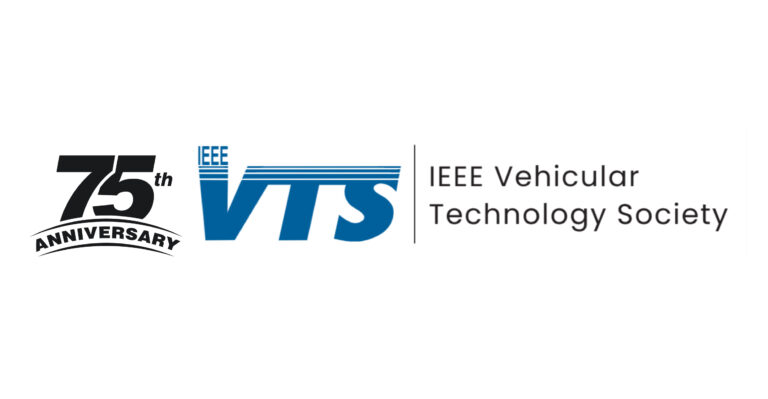Powering Up through Education: IEEE Smart Village
For nearly ten years, IEEE volunteers have been bringing reliable, low-cost electricity to off-grid communities through the IEEE Smart Village (ISV) program. Accompanying new power sources, ISV enables community-based education and entrepreneurial opportunities. ISV identifies energy, education, and entrepreneurship as three co-equal pillars needed in support of impoverished communities. As the second pillar, education ensures the long-term sustainability of community enterprise and knowledge acquisition.
ISV communities identify their priorities for sustainable development and improved livelihoods. This may begin with newly implemented electrical systems. It could also begin with education or enterprise, and then smartly apply access to renewable energy. Regardless of how a project starts, a goal is that these community projects go to scale. Sustainability and scalability are necessarily related.

“Our goal is not simply providing- access to electricity. We want communities to make the most productive use of it. The majority of people in a newly-electrified community frequently need not only technical knowledge and business skills but also education including basic literacy and numeracy. We can’t just satisfy the needs for electricity. We have to make life more sustainable,” says Olga Anderson, ISV Education Committee Chair.
ISV aids self-empowerment and economic growth of villages by providing reliable, market-based electrification, instituting community-based education, and enabling local entrepreneurship. This educational platform includes online and classroom curricula for Pre-K to 12th-grade education, vocational training, and life skills for adults.
“Our multi-faceted approach to community development includes a range of support from solar power design and operation to vocational training and job creation. The ultimate objective is to empower local entrepreneurs. This philosophy of local ownership is sustainable and life-changing,” says Dan Estes, ISV Marketing Committee Chair.
Project Obstacles and Successes
“Every project started with a dream and a dedicated group of entrepreneurs, volunteers, and community leaders on the ground. Many of our ISV projects are located in some of the most challenging environments, and the extraordinary teamwork of our entrepreneurs has led to the successes we are celebrating now,” says Anderson.
According to Estes, here are projects that faced tremendous obstacles to make a real difference in the lives that we touch.
“The first is Shakti Empowerment Solutions in Uttar Pradesh, India. Tara McCartney has established a community culture of learning, spanning from the women who have learned to read and write to the after-school program for teenagers to learn robotics. Our kick-starter investment in power and classrooms has allowed Tara to truly influence the area in hygiene, clean water, job creation, and pride in the community.

“Another project is The Maa Trust in Kenya. Crystal Courtney Morgenstern is using a multi-phased approach beginning with over 500 women being employed in bead making with training in quality production, marketing, and logistics. Our solar power is increasing their production capacity allowing them to market their wares on a global basis. The next phase is brick making and building construction training, which will allow people in the area to have gainful employment, start their own companies, and build long-lasting houses and businesses. The third phase is software development and programming. With the core power infrastructure from ISV, they can establish an IT lab, have Internet connectivity, and begin insourcing software development on an international front.
“A further example is the work of Paras Loomba with Global Himalayan Expedition. Paras has trekked hundreds of kilometers to provide the very first sustainable microgrid to over 250 communities high in the Himalayan mountains. He taught the villagers how to use electricity to attract tourists, which in turn provides incremental cash flow to the area. Giving the local people the knowledge and marketing skills is a powerful lesson in sustainable community development.”
“Another example derives from a post-war and climate-challenged context, Bending Bamboo in Vietnam,” adds Dan Wessner, ISV Operations Committee member. An immediate need after six 20th Century wars was for Vietnam to use fossil fuel to build out its national grid.
“But soon into its course of peacetime development, Vietnam realized a need to focus on sustainability. Since Vietnam faces daunting challenges from climate change, its energy goal is to build a country reliant on just renewable energy and sustainability practices. National policies challenge communities and provinces to address poverty; embed sustainability knowledge and skills from pre-school through high school; convert to solar, thermal, wind, and hydro power; and stress Vietnamese-English bilingualism so that the country has a voice in development discourse near and far,” says Wessner.
Here access to basic provision of electricity is not a stand-alone goal; rather, it is part of a spectrum of sustainability goals that inform community and national development decisions. Vietnam’s forward-looking choice is to think and live “sustainability” from the earliest grade level.
Technical Training for Sustainability
“Providing a parachute drop of solar panels into a village is foolhardy and short-lived. Long-term success requires the local community to know solar power design, basic business operations, customer service and how using electricity can make their lives easier,” says Estes.
Technical education is developed by local subject matter experts and tailored to the local environment, culture, and language. This education is necessary for the maintenance, operation, and scaling of the electric systems. The training is customized to the needs in that location and could include installation, operation, and maintenance of mini-grids; sitting and sizing of solar arrays, hydro turbines, or wind turbines; battery system configuration and maintenance; use of customer billing/payment systems; computer-aided design; and development of computer software and apps.
“We take a community-based, bottom-up approach to education and training. The community identifies specific needs, potential jobs, availability of trainers, and so on. Our entrepreneurs conduct a survey of the community with questions developed by a collaborative team of on-the-ground educations from our projects, such as what is most important for the community right now, what jobs could you create, how far do students walk to school, do they have textbooks / light / water / toilets / desks / etc. in schools. Then, we design a systematic approach to training based on the survey. This includes K -12 education, adult numeracy and literacy, and vocational training. It might be sewing, beekeeping, construction, or advanced technical training. For example in Nigeria, the Shaybis Light Up Kwara project has opened the first AutoCAD certified training center in North Nigeria.” says Anderson.
The course offerings combine hands-on activities with basic business skills and fundamental literacy, numeracy, and social skills.
According to Anderson, “we take a holistic approach to education. The question is how our entrepreneurs can deliver a 21st century education to children, youth, and adults. Our focus goes far beyond training how to operate mini grids to how to create economic and social prosperity in every community. The bigger question is how can you teach people to be entrepreneurs, how can we get them access to the digital economy, how can we bring gender equality? This requires providing the whole community access to educational resources and economic opportunities.
“Because each project is specific to the context of a community, we learn something new every time. We constantly develop and grow our approach. We can’t stick to a rigid plan because we adapt according to community needs. For example, we were going to teach English in Kenya but the community quickly informed us that it would also be beneficial for the students to learn Swahili. So, we modified the education program to teach in both languages.”
Educating the Next Generation
“According to our entrepreneurs, the majority of schools urgently need critical education resources. The support that the ISV Education program has provided has already made great progress in fulfilling those needs. This year, we have provided $50k USD per community to provide much needed computers, curricula, staff, and other technology, such as voltmeters, soldering irons, welding machines, sewing machines, etc.” says Anderson. “Access to electricity from mini grids enables the creation of digital classrooms with electronic copies of government curricula, textbooks, and scripted daily classes to assist teachers. Books can become outdated, but a tablet is in an instant library.”

The addition of electricity not only improves access to education material but allows children to connect the curriculum to real-world applications that are being developed in their communities.
“Education should immediately spark interest in children. They should see a brighter future,” says Anderson.
Bending Bamboo – Expanding Educational Opportunities in Vietnam
“Smart development is social engineering in a regardful, reciprocal, and resilient way,” says Wessner. The Bending Bamboo project in Vietnam demonstrates how local Vietnamese partners drive progressive in-country educational reform with lessons for us all.
“One, the country knows that fluency in other languages is essential to the post-war redevelopment and reimagining of its economy, science, trade, and social dynamism. The government has made it a 2025 goal for the country to be bilingual. Imagine. That is a huge goal for a population of nearly 100 million people. Vietnam has been colonized many times. Now it chooses to be bilingual to be at the heart of development discourse through education, business, science, and renewable energy policy.
“Two, the country concurs whole-heartedly with the United Nations Sustainable Development Goals (SDGs), and has set a 2030 goal to incorporate applied knowledge of the SDGs in primary through tertiary education. Again, just imagine! Public and private school systems from pre-K through high school are challenged to develop Vietnamese-pertinent materials (of, by, for Vietnam) that teach applied knowledge of living sustainably in the face of climate change, a rising sea level, consequently salinated rice paddies and contaminated aquifers, and unsupportable rural-to-city migration.
“Three, while smart energy solutions and resilient village-to-city infrastructure are very worthwhile goals, they are part of a larger challenge. Hence the United Nations SDGs integrate seventeen goals from energy to climate and hunger. Provision of renewable electricity, support for entrepreneurs and teachers, and holistic education concerning sustainability and resilience address Vietnam’s context. The country doesn’t have the luxury to contemplate and debate climate change, but must equip its youth, farmers, and industry to learn and live responsibly now.
“I’m convinced that Vietnam is constructively moving ahead with engineering that smartly embraces the right technology, renewable energy (aiming to convert to 60% renewables by 2030), and the enterprising role of teachers, who are at the heart and center of every community. Step by step, ‘leaning forward’ with all three legs of ISV’s approach.”
Get Involved with Smart Village
When asked what success looks like for ISV, Anderson replied, “that it exists. Behind every community is the dream to make their world a better, happier place. If people can stay in the villages, where their roots and hearts are, they will be able to preserve their land, culture, families, and social fabric.”
“ISV is a Signature Program of the IEEE Foundation. It allows IEEE members worldwide to have pride in truly using technology to serve humanity,” says Estes.
“IEEE has lots of members who can offer their experience to further our cause,” says Anderson.
“Engineers are invaluable to problem solving. Their imaginative, innovative breakthroughs in technology to serve humanity is a pillar of just and sustainable development,” says Wessner.
For more information on IEEE Smart Village and how you can get involved, visit https://smartvillage.ieee.org/
According to Estes, “The biggest lesson I’ve learned is how hard it is to fund programs of this scale around the world. We have more requests in our pipeline than we have the resources to fund. We take this financial responsibility very seriously. We vet each applicant and have high expectations that they will be successful and reinvest in the communities that they serve, from both a business and a community development standpoint. Our fundraising has been enough to reach 50% of our goal.”
Donations to ISV through the IEEE Foundation are instrumental in ensuring the future success of the program and can help ISV reach the remaining 50% of its goal. More information about how to donate can be found on the IEEE Foundation’s ISV page.
ISV is possible thanks to the IEEE Foundation, corporate donations, and individual donations, as well as financial and volunteer support from IEEE organization units including Power and Energy Society (PES); Nuclear and Plasma Sciences Society (NPSS); Power Electronics Society (PELS); Industry Applications Society (IAS); Industrial Electronics Society (IES); Consumer Electronics Society (CES); Systems Man, and Cybernetics Society (SMCS); and the Council on SuperConductivity (CSC).






2 Responses
Congratulations for the success, i am very impressed and will like to patrticipate in your programme in Nigeria.
Thank you for your interest! Please visit our web site and complete the volunteer interest form. Smartvillage.ieee.org